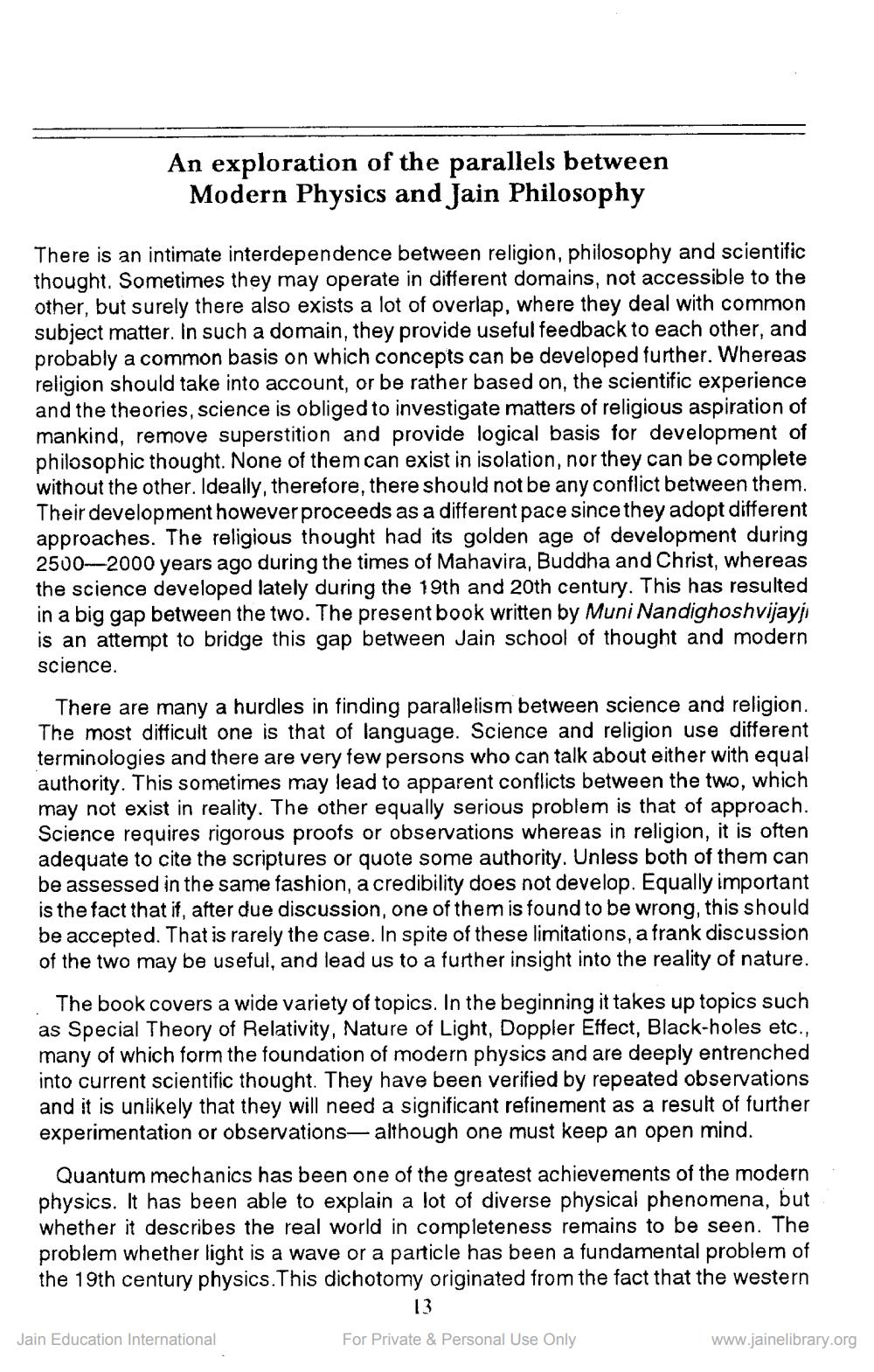________________
An exploration of the parallels between Modern Physics and Jain Philosophy
There is an intimate interdependence between religion, philosophy and scientific thought. Sometimes they may operate in different domains, not accessible to the other, but surely there also exists a lot of overlap, where they deal with common subject matter. In such a domain, they provide useful feedback to each other, and probably a common basis on which concepts can be developed further. Whereas religion should take into account, or be rather based on, the scientific experience and the theories, science is obliged to investigate matters of religious aspiration of mankind, remove superstition and provide logical basis for development of philosophic thought. None of them can exist in isolation, nor they can be complete without the other. Ideally, therefore, there should not be any conflict between them. Their development however proceeds as a different pace since they adopt different approaches. The religious thought had its golden age of development during 2500-2000 years ago during the times of Mahavira, Buddha and Christ, whereas the science developed lately during the 19th and 20th century. This has resulted in a big gap between the two. The present book written by Muni Nandighoshvijayj is an attempt to bridge this gap between Jain school of thought and modern science.
There are many a hurdles in finding parallelism between science and religion. The most difficult one is that of language. Science and religion use different terminologies and there are very few persons who can talk about either with equal authority. This sometimes may lead to apparent conflicts between the two, which may not exist in reality. The other equally serious problem is that of approach. Science requires rigorous proofs or observations whereas in religion, it is often adequate to cite the scriptures or quote some authority. Unless both of them can be assessed in the same fashion, a credibility does not develop. Equally important is the fact that if, after due discussion, one of them is found to be wrong, this should be accepted. That is rarely the case. In spite of these limitations, a frank discussion of the two may be useful, and lead us to a further insight into the reality of nature.
The book covers a wide variety of topics. In the beginning it takes up topics such as Special Theory of Relativity, Nature of Light, Doppler Effect, Black-holes etc., many of which form the foundation of modern physics and are deeply entrenched into current scientific thought. They have been verified by repeated observations and it is unlikely that they will need a significant refinement as a result of further experimentation or observations, although one must keep an open mind.
Quantum mechanics has been one of the greatest achievements of the modern physics. It has been able to explain a lot of diverse physical phenomena, but whether it describes the real world in completeness remains to be seen. The problem whether light is a wave or a particle has been a fundamental problem of the 19th century physics. This dichotomy originated from the fact that the western
13
Jain Education International
For Private & Personal Use Only
www.jainelibrary.org




